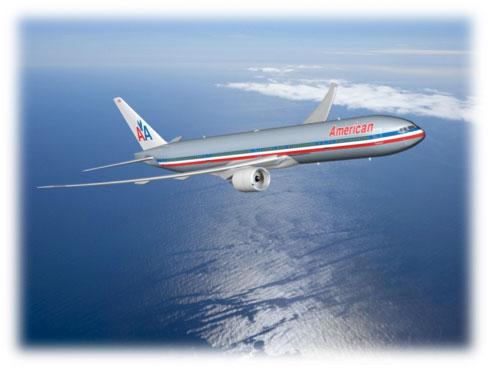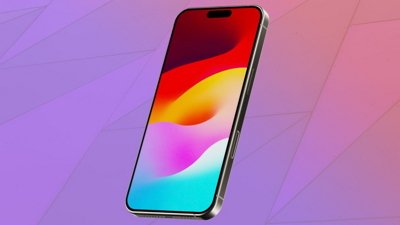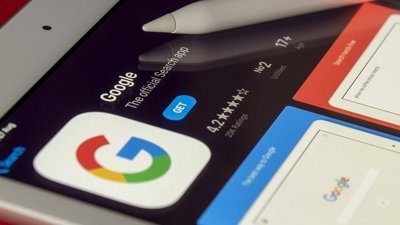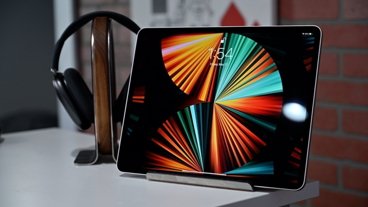As the debate over use of portable electronics during takeoff and landing of commercial flights rages on, details of a 2011 incident suggest that an iPhone may have caused interference with the flight equipment on a regional airliner.
The compasses on the flight were behaving abnormally, sending the plane several miles off-course, according to a report published Wednesday by Bloomberg. But the systems apparently returned to normal after a flight attendant had a passenger in row 9 turn off their iPhone.
An unidentified co-pilot who spoke to NASA's Aviation Safety Reporting System suggested it was likely the iPhone caused interference with the plane's systems, as the timing of the phone being turned off coincided with when the navigational issues were resolved.
The incident is one of dozens of episodes where airline pilots, mechanics or other personnel believe that passenger electronics may have interfered with airplane systems. However, some major carriers such as Delta still support the relaxing of rules on use of personal electronics under 10,000 feet, noting that there is no way of verifying with certainty that those devices are actually the cause of any interference.
The Federal Aviation Administration has been leaning toward relaxing its current rules, which prohibit the use of most electronic devices — including Apple's iPhone, iPad and iPods — while the plane is under 10,000 feet. But proposed rule changes by the FAA have been held up by technicalities, and the desire to develop a concise, future-proof set of regulations.
The FAA has found itself under considerable pressure to relax the rules that require passengers to power down their devices prior to takeoffs and landings. It hopes to announce a rule change by the end of the year.
Apple's iOS devices include an "airplane mode" feature that turns off all of the wireless radios inside the hardware. But the term "airplane mode" can mean different things across different devices, making it more difficult for the FAA to adopt a standard that can apply to a range of devices.
Modern wireless interference are believed to be associated mostly with cellular radios. That's why airlines that use the iPad as an electronic flight bag do not use cellular-capable versions of Apple's touchscreen tablet.
 Sam Oliver
Sam Oliver







-m.jpg)






 Malcolm Owen
Malcolm Owen
 Amber Neely
Amber Neely


 Christine McKee
Christine McKee

 Chip Loder
Chip Loder
 Marko Zivkovic
Marko Zivkovic









80 Comments
And let's not forget Apple's assassination of JFK. Unforgivable!
Why do most articles discussing the topic of electronic devices on airplanes combine two very different things - devices with radios and devices without or disabled. I'm not aware of any serious discussion of allowing the use of wireless radios on personal devices during flights (despite that the current wifi / cellular Internet systems use the same technology) so I'm not sure what this situation - even if true - has to do with allowing the use of devices during take off and landing.
[quote name="GTR" url="/t/157533/apple-iphone-suspected-of-interfering-with-airline-equipment-in-2011-incident#post_2327079"]And let's not forget Apple's assassination of JFK. Unforgivable![/quote] That made my day! :)
I've researched the cases of PED (Portable Electronic Device) interference reported in ASRS.
There have been everything from GSM buzz in the pilots' headphones interfering with hearing air traffic controllers, to navigation instruments acting up, to autopilots disengaging mysteriously near landing... all until some passenger turned off their device.
Recently Boeing engineers discovered, while testing a WiFi system, that some personal devices kept ramping up their signal and would cause the pilot's electronic displays to blank out. They had to beef up shielding on those displays. Imagine if that had happened in flight.
Probably the worst instances are when the TCAS collision avoidance system issued a bogus "descend!" command while flying low in the terminal area. Fortunately the pilots ignored that command. (These false TCAS alerts make it appear as if another plane is right on its tail.)
--
Because interference is rare, and seems to depend on the device and where the passenger is in relation to wiring, it's difficult to prove anything after the flight is over.
Fortunately, so far there's been no deadly accidents attributed to PEDs, and so the FAA seems to be okay with not worrying the public. (Similar to the way they refused to require fire extinguishers in the cargo hold for years, hoping that the odds were in their favor.)
Someday we'll have planes that are perfectly shielded and/or use fiber optics for everything, but we're not quite there yet.
--
That said, it's the lithium batteries that worry me nowadays. There are ASRS reports of baggage catching fire while being loaded. If that happened in mid-air, it could be disastrous.
(To those who do not know. ASRS allows pilots to submit confidential incident reports without fear of reprisal. This has allowed NASA to collect a lot of info that would otherwise never be known about.)
Why is there a question? Either devices do or don't cause the problems. Why is testimony needed? Why are there suggestions that maybe, it was likely, that the iphone caused instruments to misbehave. The solution is simple. Controlled experiments. It's called science. Either iphones can cause problems or they can't.